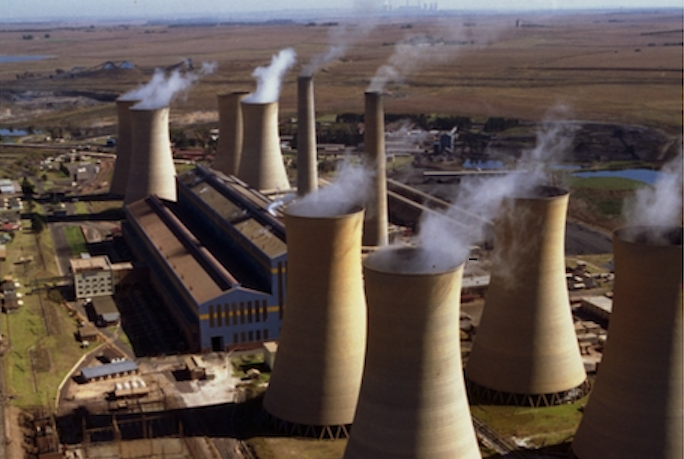- Ratings agency S&P Global has placed South Africa’s state owned energy utility, Eskom, on CreditWatch with positive implications.
- This comes after country’s Treasury announcement that it plans a R254 billion bailout of the energy utility.
Under the leadership of President Ramaphosa, the country’s state owned power utility, Eskom, has been plagued by major incidences of theft, questionable equipment failure and acts of sabotage which, along with a legacy of poor planning, maintenance and corruption, over the last decade, has spiralled the country into a major energy crisis where daily blackouts that are costing the economy a massive R950 million a day.
S&P expects the bailout will address Eskom’s near-term debt obligations once implemented and improve Eskom’s liquidity and capital structure which will put the company on a path to financial sustainability.
Related news: South African Treasury appoints German consultants to assess Eskom’s operations
S&P explains that the bailout will address Eskom’s R184 billion debt maturity and interest obligations over the fiscal year 2024 to fiscal year 2026 through subordinated loans provided by the government and see the transfer of up to R70-billion of loans to the government in fiscal 2026.
The agreement will ensure that Eskom can meet its debt obligations as they fall due over the next three years, reducing the likelihood of a default owing to a liquidity crisis.
Related news: Why the newly appointed Electricity Minister in South Africa should heed the words of the former CEO
S&P does raise concerns about Eskom’s finances in relation to further deterioration in electricity generation volumes and management of its capital expenditure. Under the debt relief agreement, Eskom will be prohibited from raising additional debt through the period and will need to generate sufficient revenue to cover operating and repair costs and capex obligations. They believe that Eskom will not meet regulated allowable revenue levels in the next two years. The persistence of load-shedding, high use of expensive diesel-powered open cycle gas turbines and ongoing and increasing debt by municipalities will remain key risks to cash flows over the next 24 months.
“We understand that Eskom will receive the loans, which will be interest-free initially, from the government in quarterly tranches. Eskom will use these to settle upcoming maturities and interest payments. The National Treasury will tie conditions to the loans that are aimed at operational improvements and reducing leverage. We understand that Eskom’s progress in achieving the conditions will be measured on a quarterly basis; if conditions are achieved, the loans will be replaced with equity issuances, and if the conditions are not achieved, the loans will attract interest at market rates,” states S&P.
The bailout was confirmed by Finance Minister Enoch Godongwana while delivering the 2023 Budget Speech at the Cape Town City Hall at the end of last month. Of the R254 billion debt relief, R168 billion will be in capital while R86 billion will be in interest.
“Because of the structure of the debt relief, Eskom will not need further borrowing during the relief period. Government will finance the arrangement through the R66 billion baseline provision announced in the 2019 Budget, and R118 billion in additional borrowings over the next three years,” said the Minister.
In the report, the Treasury said Eskom’s operational failures were intertwined with its “untenable” financial position. Since 2008/09, government has provided the utility with R263.4 billion in bailouts. These allocations, it said, have failed to stem the collapse of Eskom’s balance sheet and operations.
With a current R423 billion debt on its book, the document says the figure imposes an “enormous drain on the economy”.
“Government guarantees R350 billion of this debt, which is at risk of default – a contingent liability that raises South Africa’s risk premium and borrowing costs,” read the Budget Review document.
The goal of the debt relief is to strengthen the utility’s balance sheet, enabling it to restructure and undertake the investment and maintenance needed to support security of electricity supply.
The key features of this arrangement include government providing Eskom with advances of R78 billion in 2023/24, R66 billion in 2024/25 and R40 billion in 2025/26. These advances will cover capital and interest payments as they fall due and may only be used for that purpose. In 2025/26, Godongwana said government will directly take over up to R70 billion of Eskom’s loan portfolio. This arrangement has been the subject of extensive consultation with Eskom and its stakeholders.
S&P’s CreditWatch positive placement reflects that the agency could raise the rating by one or more notches based on its expectation that Eskom’s liquidity position will strengthen and that the risks of a near-term default event will reduce once the debt relief agreement is implemented. S&P expects to resolve the CreditWatch in the coming quarters once the Eskom Debt Relief Bill has been signed and the agency obtains documentation on the terms and conditions of the agreement between treasury and Eskom.
Author: Bryan Groenendaal















